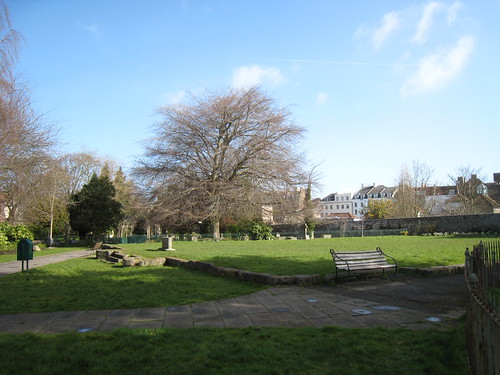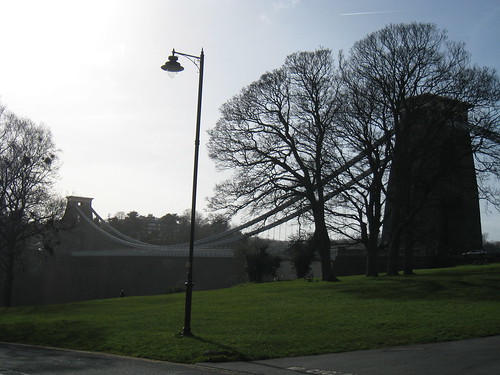They had a car.
And while getting around England is feasibly done via public transportation, there isn’t a single route that specifically serves the regional circle of cemeteries. Yet while M&A were more than willing to muck with me amongst the graves, they had to get themselves back to
In the spirit of spontaneity, my itinerary was not set in stone; I rolled into
My remote aerial surveillance (Google maps) paid off ten-fold – we rolled up to
The cemetery was exactly as I expected: long and narrow with a massive square void on one end – the grassy footprint of the church that once stood there. With three members in our search party, we could easily scour every grave within an hour. There was just one glaring complication – half of the graves were illegible, their faces completely stripped by erosion, the fragile stone chipped away by natural forces. Even if ATEV’s grave was nearby, there was a strong chance we’d never find it.
 We systematically read each and every stone, often brushing away wet leaves and peeling off moss. Some tombstones were spread apart from one another; others were packed together, neatly and tightly. As a Vice Admiral when he died, surely ATEV’s headstone would be a little nicer, perhaps with some military décor. A few of the nicer, in-tact graves fit this description, yet after an hour of searching each and every grave, from Clifton Hill road to the Fosseway, there was no sign of a Vidal. To think this grave, so significant to my heritage, would disappear with the fragility of stone was heartbreaking.
We systematically read each and every stone, often brushing away wet leaves and peeling off moss. Some tombstones were spread apart from one another; others were packed together, neatly and tightly. As a Vice Admiral when he died, surely ATEV’s headstone would be a little nicer, perhaps with some military décor. A few of the nicer, in-tact graves fit this description, yet after an hour of searching each and every grave, from Clifton Hill road to the Fosseway, there was no sign of a Vidal. To think this grave, so significant to my heritage, would disappear with the fragility of stone was heartbreaking.
Disappointed but not ready to surrender, hunger hindered my desire to keep searching. The lunch hour was waning and low blood-sugar was getting the best of us. Over an unpleasant lunch down by the @Bristol complex, I phoned local hotels in the hopes of finding a well-situated and reasonably-priced inn for the night. Considering the last-minute, almost desperate nature of my inquiries, I succeeded in finding one near
As awkward culinary creations digested in our stomachs, we scurried up to my newfound hotel in
 The remaining hours of the day allowed for a sight-seeing jaunt down to Cheddar and Wells, where we snacked on authentic cheese and local beers, respectively. My chauffeurs had me back in
The remaining hours of the day allowed for a sight-seeing jaunt down to Cheddar and Wells, where we snacked on authentic cheese and local beers, respectively. My chauffeurs had me back in As I sit in a pub, scribbling in my Moleskine, reflecting on the day’s events over a pint (or two), I’m not giving up hope that this grave can be found. Only tomorrow will tell.
No comments:
Post a Comment